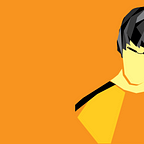The 101 To Non-Fungible Tokens And Market Opportunities
Where there is money to be made, there will always be speculators hoping to ride the wave. In 2017, it was Initial Coin Offerings (ICOs), right now there’s a lot of hype in Non-Fungible Tokens (NFTs).
Last month, the trading volume of the NFT market was $342 million. In comparison, the entire year’s trading volume of the NFT market in 2020 was only around $200 million. This trading volume has coincided with cryptocurrency price increases, an interest in Decentralised Finance (DeFi) and massive digital art sales like that from Grimes.
Everyone is rushing to becoming an artist now
One of the massive booms that have accompanied the NFT market are the art marketplaces. Digital asset marketplaces like OpenSea and Rarible have been a breakout search result on search engines like Google. This has been accompanied with people on social media asking questions on how to make a NFT and how to put their art onto such a marketplace.
A Non-Fungible Token is simply a term for a token which is indivisible (i.e. non fungible). It specifically is a term used to describe a ‘unique’ digital asset whose ownership is tracked on a blockchain. The most common NFTs are those on the Ethereum blockchain using the ERC-721 standard and some on ERC-1155. ERC-721 was the standard used for Cryptokitties. ERC-1155 is an increasingly popular standard, which allows for the creation of both utility tokens and non-fungible tokens which are more efficient in bundling transactions to save on gas (transaction costs).
Besides Ethereum, there are also other blockchains like EOS, NEO and Tron who have introduced their own NFT standards. Tron, for example introduced their standard, TRC-721 in December 2020 and it is being used for a Cryptoflower game.
Properties of a NFT
What makes a NFT unique is the aspect of non-fungibility.
The key characteristic is that the tokens are indivisible and they can have smart contracts which allow for detailed attributes such as identity of the owner, rich metadata, or secure file links. The unique information could be the address of a digital artwork and the proof that it is the original to be owned. Besides the non-fungibility, it benefits from the blockchain by being difficult to destroy and being publicly verifiable.
So what?
There are several use cases for NFTs. They can for example be used to signal the ‘rights’ for ownership of a certain piece of digital art. They can also be used in a commemorative manner and be traded. They can be used for assets within a video game.
The current hype around NFT is in digital collectibles. Whilst well-known artists or famous creators/influencers/celebrities can sell a NFT like a good ol’ brand name entrepreneur/influencer/celebrity could sell an ICO to the crowd, many artists who have issued NFTs have not always performed so well.
The key difference between a highly bid up NFT versus a lower priced one is the audience size of the creator behind the NFT. In this aspect, the NFT is a valuable means of securing cryptocurrency as a return on a creator’s branded piece of work. Chris Torres, the artist behind the Nyan Cat meme, is an example of one such creator who has secured a monetary return for the claim of ‘ownership’ over the original. In selling off the bragging rights, Torres was paid $600K in Ethereum for it.
Whilst some argue the uniqueness of a NFT is its scarcity — one could also argue that this is generally the same for a physical good. A chair made by a famous designer is a unique piece e.g. Marc Newson’s Lockheed Lounge. It is as unique as the ship of Theseus, there can however be copies and other pieces with an equal claim of being ‘unique’.
In NFTs, where ownership does not necessarily enable unique combinations such as say a flower’s evolution, a NFT’s value is highly extrinsic. In the case of utility tokens such as Ethereum, the value case is much more intrinsic as one can point as to how the token could be used.
An extrinsic value of a NFT is more dependent on market and hype. Pokemon cards, or NBA Top Shot cards are highly dependent on the value that the crowd collectively assigns it. The valuation may be calculated from certain attributes but there is no utility besides personal satisfaction of the buyer.
What It Could Mean
As the protocols and market grows, there are a few opportunities one could look into:
- NFTs could be used in gaming. Right now games such as Aavegotchi are kinda like ICOs for the creators but there is an opportunity for more applications of how a smart contract could be used in transactions.
- NFTs could be used for collateral. Marketplaces like NFTfi allow for collateralized loans.
- NFTs could be used as programmable art. One could own a ‘master’ copy of the artwork with many individual layers and attributes that others could own. An example is Async Art.
- NFTs could be used by creators as rewards for their fans. Like Beeple, one could sell NFT to their thousand true fans. There could be social tokens like that for fan engagement on Rally.
Originally published at https://viralwegrow.com on March 7, 2021.
